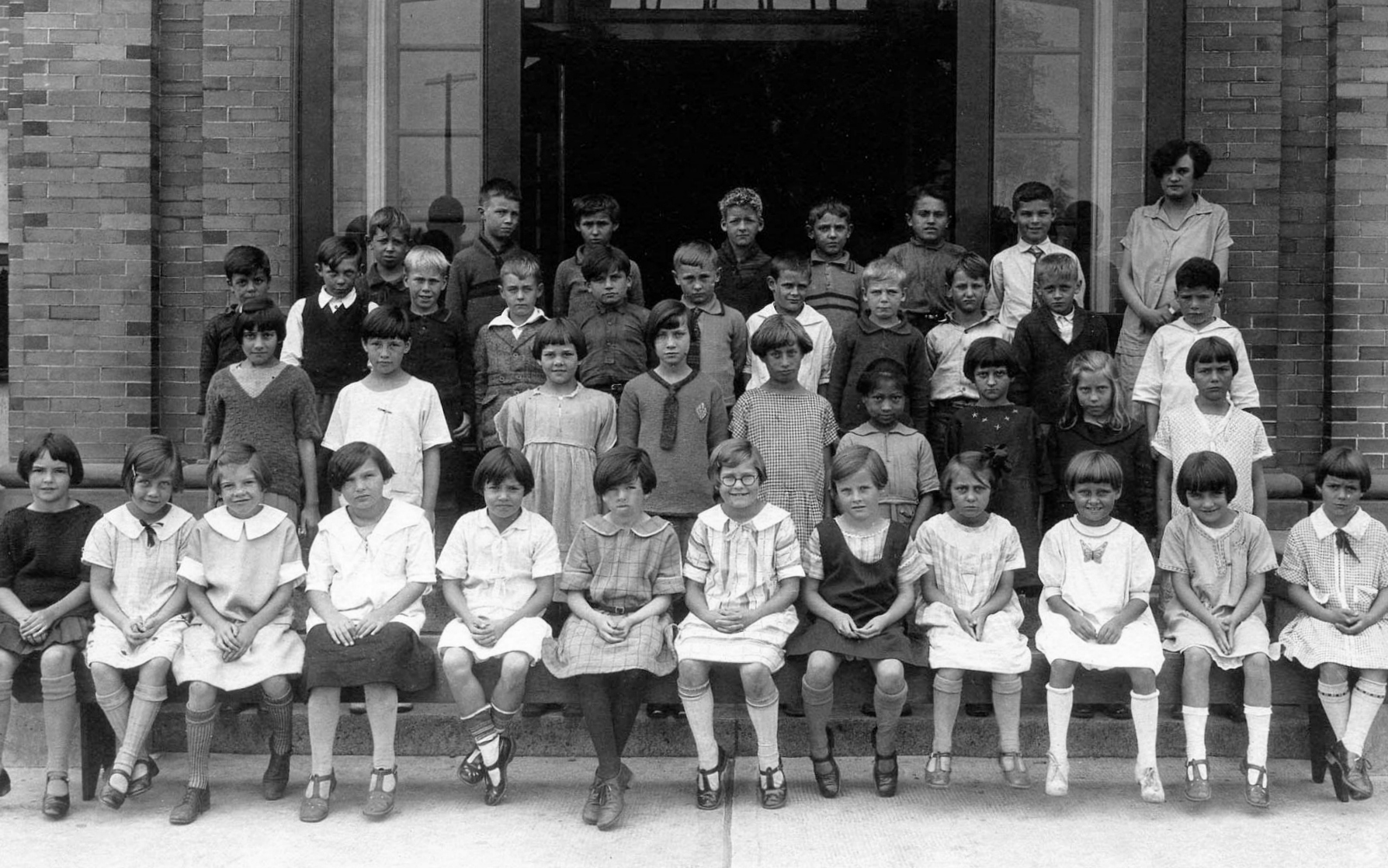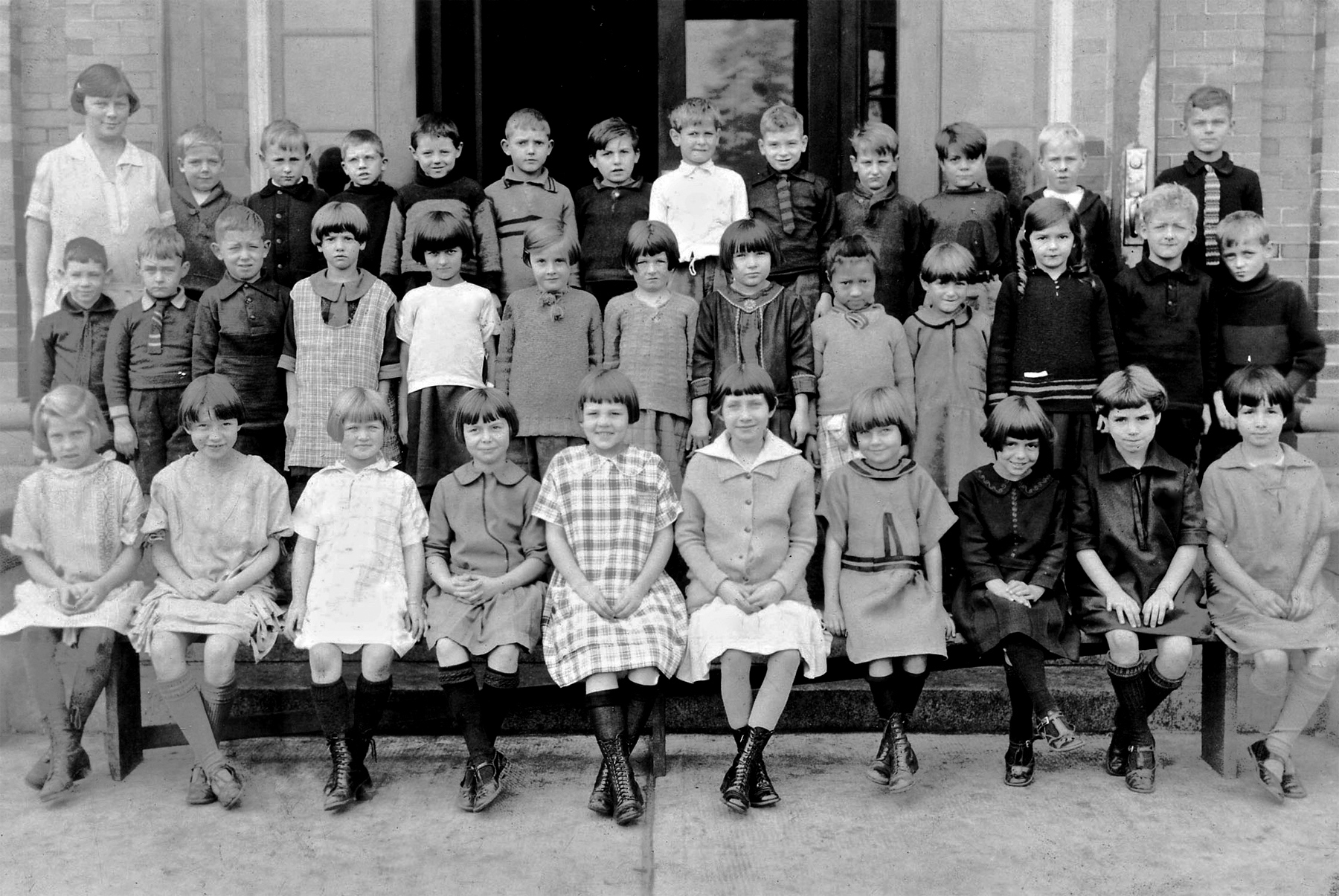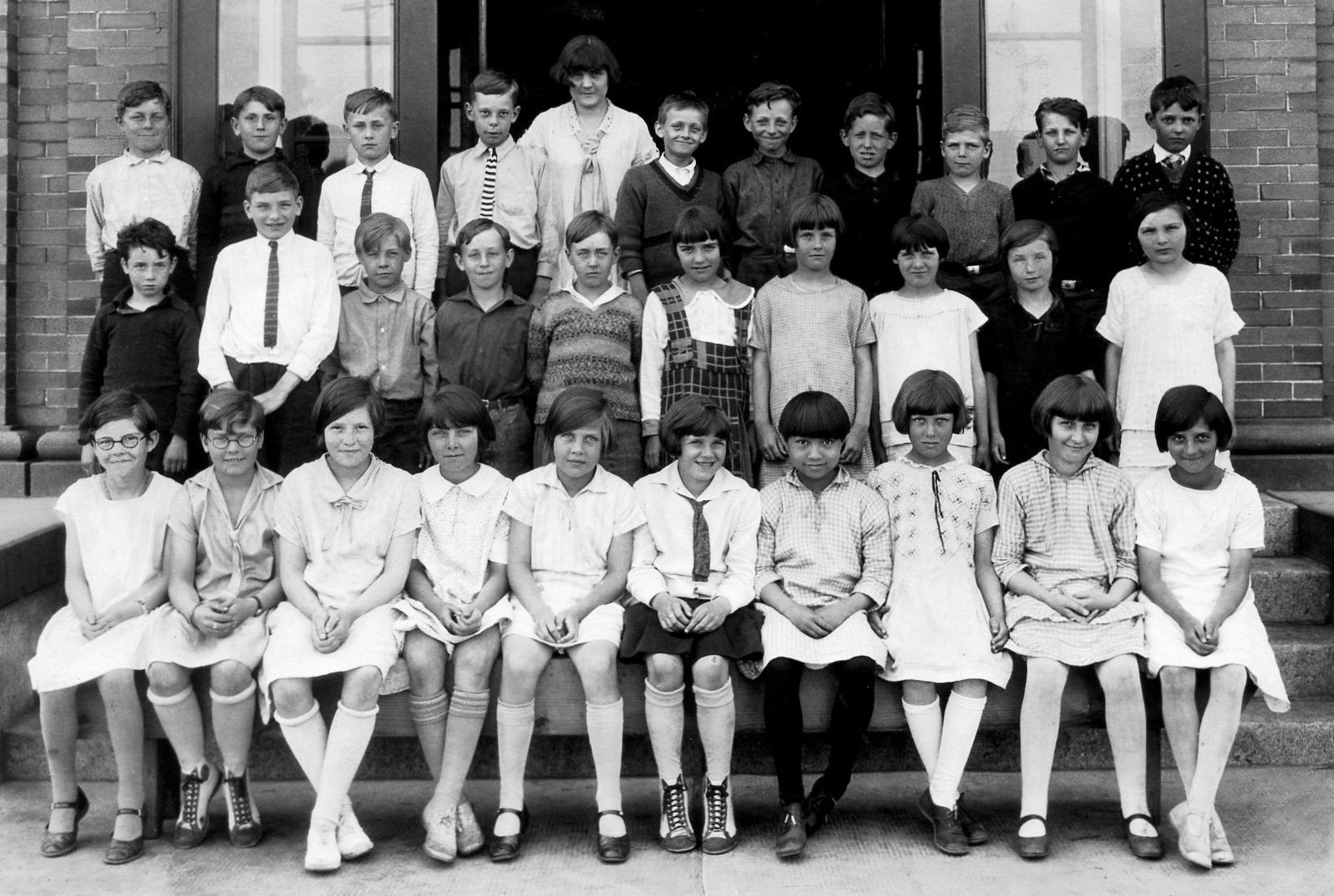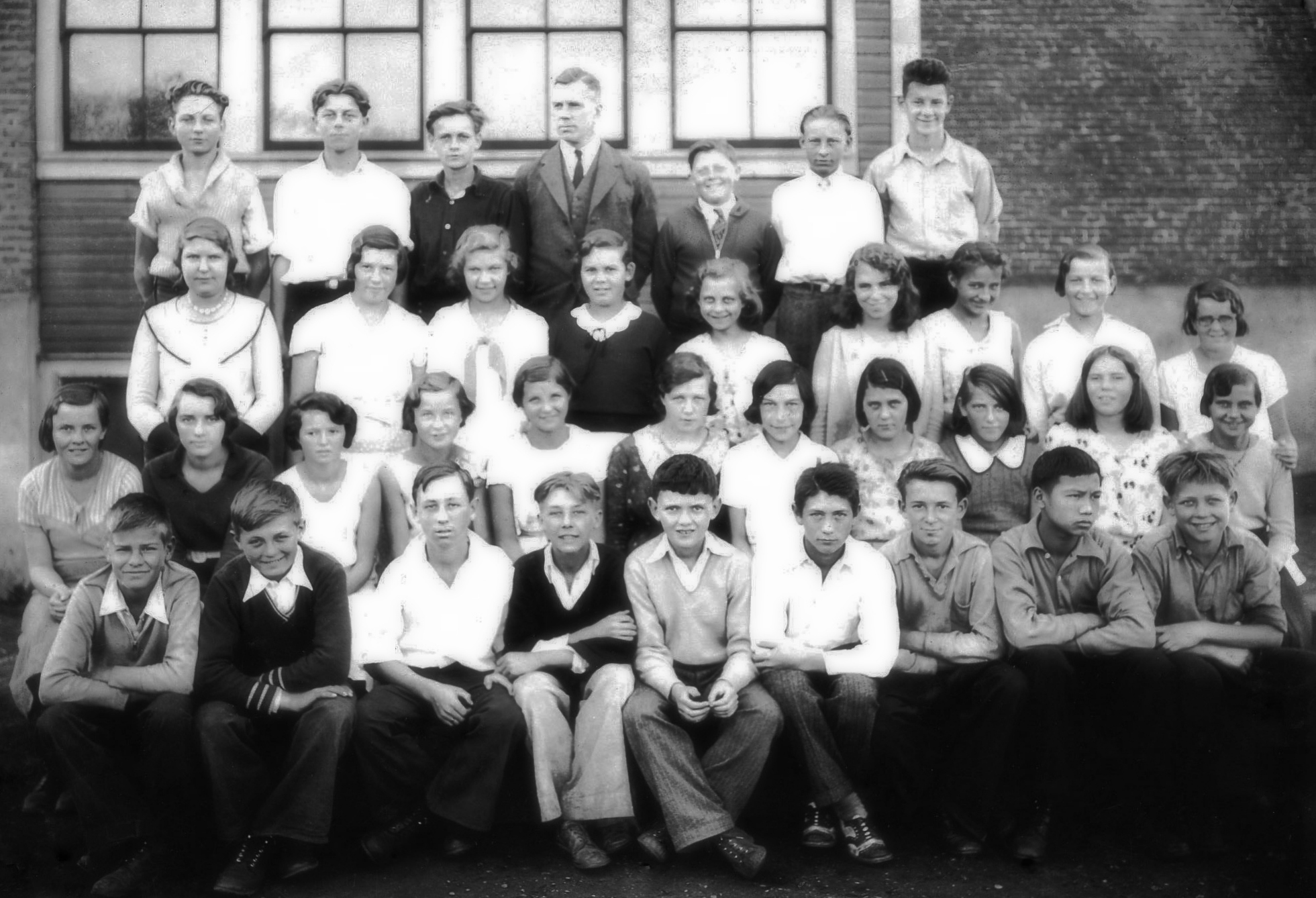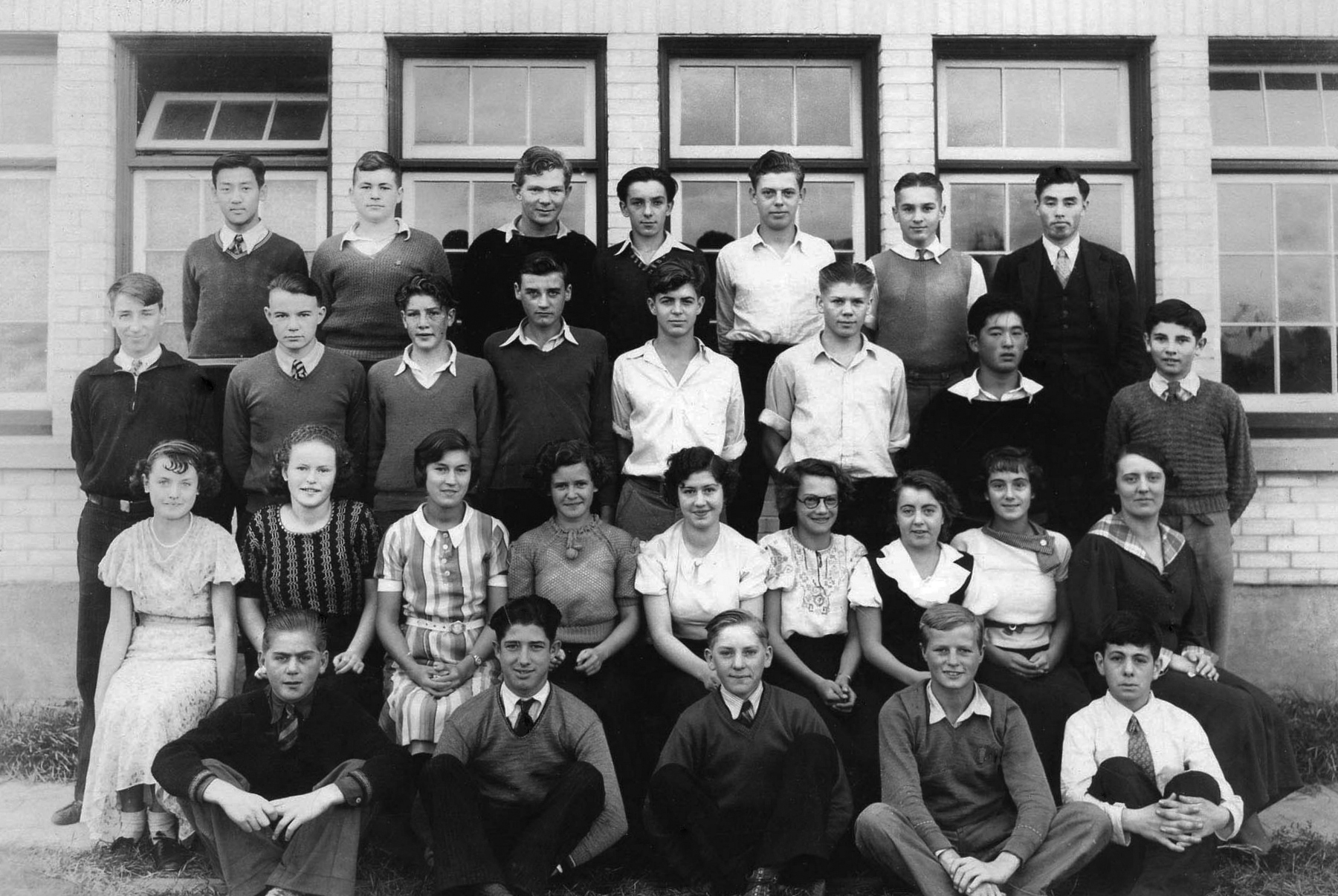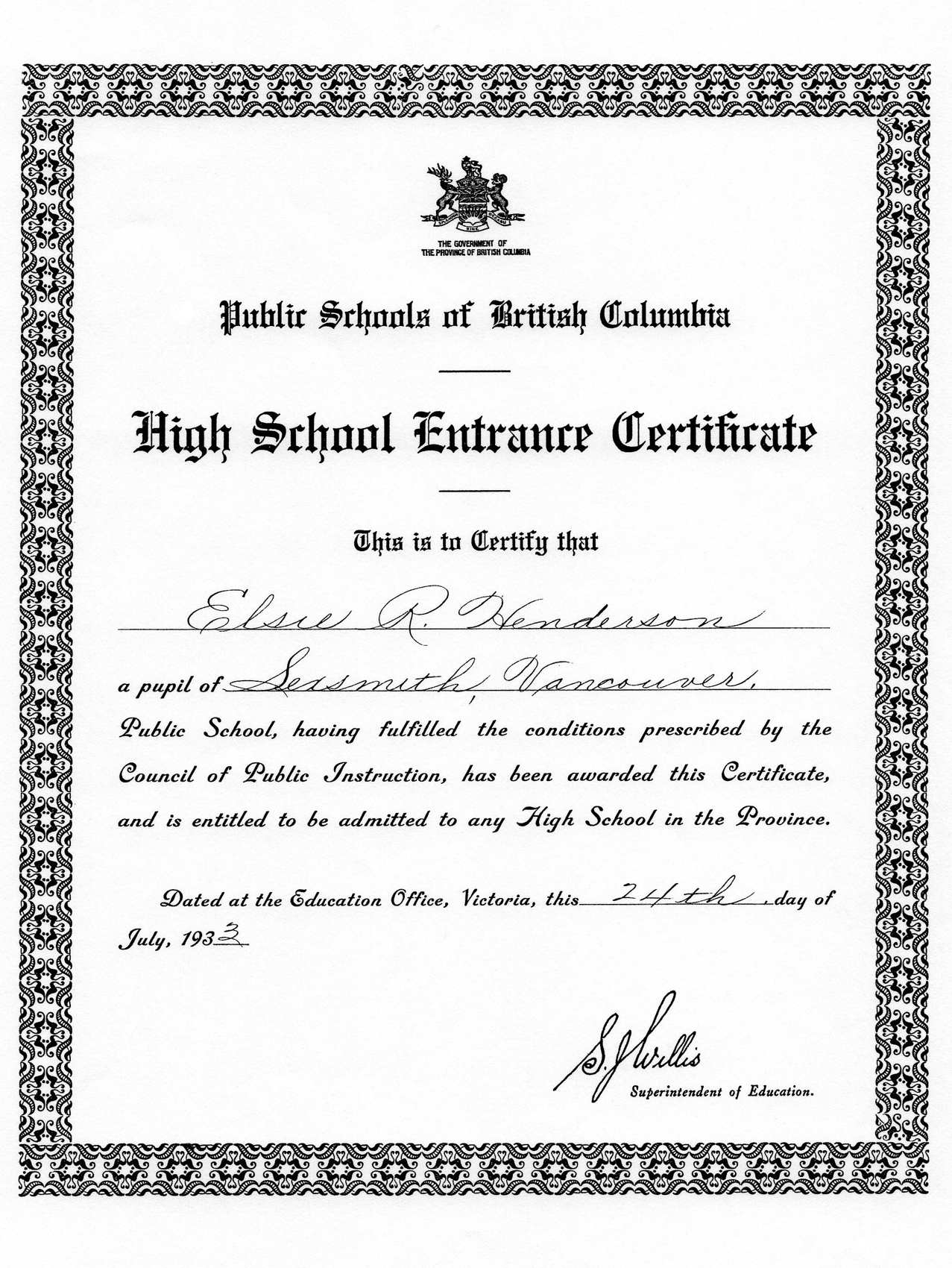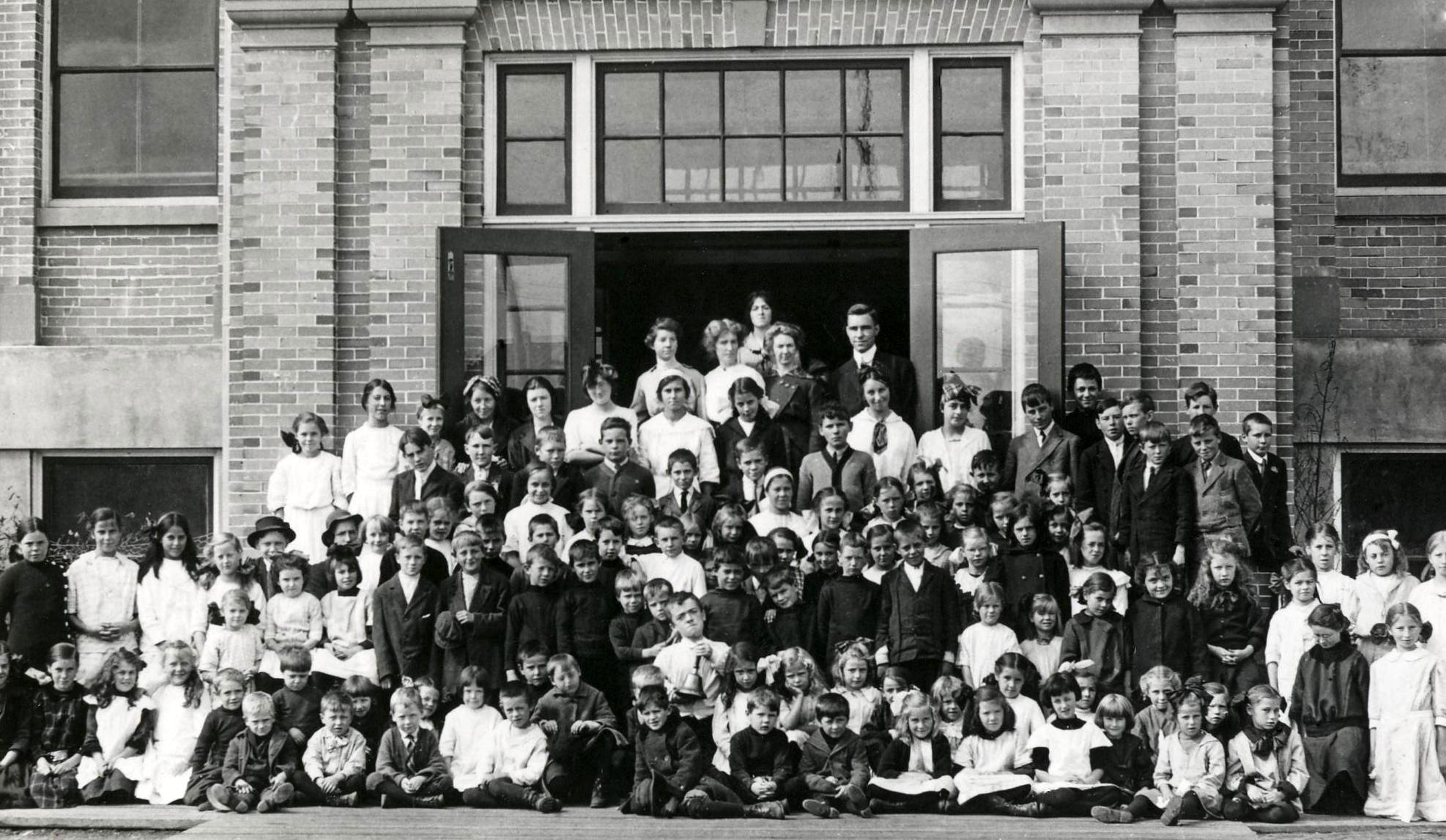Sexsmith Elementary: Photos and Documents Featuring Elsie Henderson, a Former Student; Excerpts from a School History
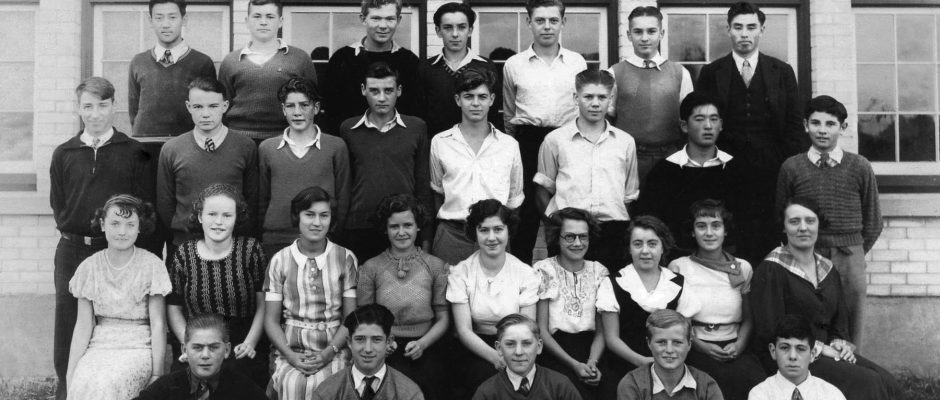
Elsie was born on December 28, 1917. Her family had come to Canada from Northumberland, England in 1907. They first settled in High River, Alberta, where her father pursued his trade as a carpenter. A few years later, the family moved to Calgary, where Elsie’s brother Douglas Henderson was born in September 1914. The family moved to Vancouver around 1920. Between 1921 and 1924 they lived at 299 West 65th Street, and later, 185 West 63rd Street. Elsie’s mother died in Vancouver on August 1924.
Elsie attended J. W. Sexsmith Elementary School from Grade One to Grade Eight. She graduated in June 1933.
(The information above, and the accompanying class photos were provided by her niece, Sally Funk.)
Grade One – Elsie is in the first row, on the farthest right.
Grade Two – Elsie is in the first row, fifth from the right.
Grade Three – Elsie is in the middle row, 6th from the left (pom poms at the neck.)
Grade Four – Elsie is in the first row, second from the right.
Grade Five – Elsie is seated in the middle row – 4th from the right.
Grade Six – Girls standing second row from the top, Elsie is the second girl from the left.
Grade Seven – Elsie is seated second row from the bottom, first on the left.
Grade Eight – Elsie is seated in the second row, 4th from the left
ELSIE’S SCHOOL CERTIFICATES
EXCERPTS FROM A SCHOOL HISTORY PREPARED IN 1964
The School’s Name
- The School’s Name
Photo: John Wesley Sexsmith
John Wesley Sexsmith was born in Richmond, County of Lennox, Ontario, on May 10, 1830. His father and mother were both members of the U.E. Loyalist families. His education was obtained in the common schools of Ontario and after leaving school he entered the lumbering business and also became a general merchant and established a cheese factory. Later, financial reverses over-took him and although well on in middle life he decided, like many others, to try his fortune in the west.
Accompanied by all of his family, with the exception of his eldest son, he went by train to San Francisco, a journey of eleven days at that time, thence by boat to Victoria and finally to Moodyville on Burrard Inlet, arriving there in 1876.
He was desirous of establishing a farm and so crossed the Fraser River by the road which, I understand, roughly followed what is now Main Street. Along the Fraser there was a very good road extending from the Musqueam Indian Reserve to New Westminster, a road over which it was possible to ride a horse the whole distance. Following this road down to the present location of Marpole he crossed the river by rowboat to Lulu Island. There he decided to purchase a piece of land as soon as his oldest son arrived from Ontario.
Having established his home here he put in practice some of his experiences in Ontario and promptly proceeded to build a cheese factory from the materials at hand. This venture proved so successful that he soon extended his land holdings to some 1900 acres in this area as well as several hundred acres in Pitt Meadows. Transportation being a difficult problem he next established a boat service on the North Fraser to New Westminster.
As settlement of this area increased he became active in the organization of the district into the Municipality of Richmond and was for a number of years its reeve. As to whether this municipality was named after his birthplace I can only surmise. He at one time also owned a salmon cannery on the Fraser, and was a large shareholder in the Flour Mill which later took its place. In the early years of Richmond Municipality he was the man who was largely responsible for the building of the first bridges connecting Marpole, Sea Island and Lulu Island.
After his many years of activity the latter days of his life were spent in his old home on the River Road near Bridgeport School. Here he died suddenly on September 22, 1920, after over 90 years of healthy, vigorous life. So much for the man, and now for the story of the foundation of your school as I have been able to piece it together. From what I have been able to learn it was one of the first, if not the first of the strictly rural schools established on the mainland of B.C.
At the time of the arrival of the Sexsmith family at Moodyville there was a school at Gas Town and a company school provided at Moodyville by the Moodyville Lumber Company. Shortly after her arrival Mrs. Sexsmith was engaged as the teacher of this school. She was one of the first teachers with professional qualifications to teach in this section, having been, before her marriage, an assistant to my other grand-father, Frederick Burrows, Inspector of Schools for the Counties of Lennox and Addington in Ontario.
After becoming established on his new farm Mr. Sexsmith at once took up the question of providing an education for his and surrounding families. He decided to interview the authorities at Victoria and on arrival there found two Ontario friends, Messrs, Walker and Robson, in positions of authority.
Arrangements were readily arrived at for the establishment of a school roughly following the Ryerson System and patterned on the Ontario system of education. This of course meant financial assistance from Victoria. It is rather difficult for me to establish the exact date at which all this took place. I am informed however that Miss Alida Sexsmith, later Mrs. D.S. Milligan, was your first teacher. Records show her marriage took place in 1878, so presumably your school was established at or near its present site a short time before that. I am informed also that at first great difficulty was found in keeping the class up to the required number of ten pupils as the population was so widely scattered. Some of the names found on the class roll of that early school were, Credlands, Daniels, Eburne, Gariepy and Rowlands.
(The above account was provided by Mr. F.B. Sexsmith, one of Mr. J.W. Sexsmith’s grandsons. His remarks about the early schools do not refer to Sexsmith School but they are interesting as a record of the beginnings of formal education in the neighboring community.)
School Photo (all grades) – 1920
Additional Excerpts from the School History (1964)
The School Buildings and Grounds: The present school consists of a wooden frame building and a brick concrete building. The frame building, now called the Annex, originally contained two small classrooms and was opened in 1912. A year later the main brick building containing eight classrooms, a staffroom, office, and full basement was opened.
In the early days of the school, a deep gully crossed the southeast corner of the grounds. A cool little stream flowed through it and small trees and shrubs wooded its sides. At noon the school children used to fish there for trout. The pupils entered the school grounds by crossing the gully on a small footbridge
Later, the stream was dammed and sluiced gates were installed. The water was backed up and used for floating logs. The whole area surrounding the school was heavily wooded at that time.
The School Enrolment: When the school opened in 1912 there were only two divisions. The main building opened a year later with four divisions and 150 pupils enrolled in grades one to eight inclusive. The enrolment remained quite static until 1919. The 1920’s however were a decade of rapid expansion. In 1920 another division was opened making a total of five with 176 pupils enrolled. More divisions were added in 1921, 1922, 1924, 1925 and 1928 by which time there were ten divisions and the enrolment had climbed to 360. It remained fairly static until about 1936 when it began to decrease somewhat so that by 1939 there were only eight divisions and 300 pupils.


